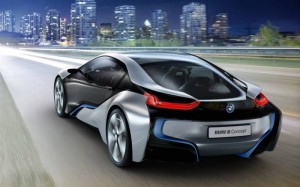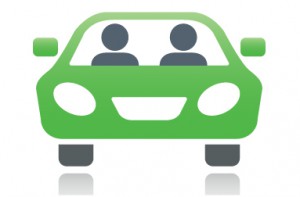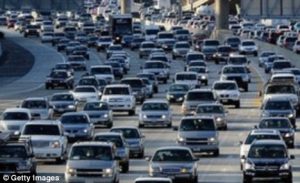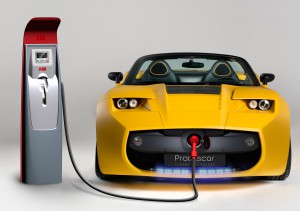The Future of Urban Transportation is Electric. How Will It Change Our Lives?
As the world’s population grows, the demand on transportation continues to reach an all-time high. While many people are choosing to buy and use their own cars, others must rely on public transportation services like buses, trains, or ride share services like Uber.
This demand for reliable transportation has led to the world transport industry’s use of energy doubling in the 30 years alone. This increased energy use has compromised the environment, dirtied the air and soil, and put people’s lives at risk. In fact, in 2014 the World Health Organization reported that seven million people have died either directly or indirectly from air pollution.
With few countries adopting dedicated travel and transportation policies and road travel predicted to double by the year 2050, the damage inflicted on the environment by the global transportation industry will only get worse. Fortunately, the exciting inventions and technology that we are watching unfold before our eyes today hold the promise of easing this damage and transforming the way that people will utilize transportation services in the future.
The transformation of the transportation industry could lie with technological and virtual inventions that continue to hit the market today. Electric vehicles, or EVs, as well as connected and autonomous cars and the Internet of Things, all hold the promise that could lead to less energy being used while still providing ride services that people need to go to work, school, and elsewhere everyday.
Navigant Research and its recent study on the future of transportation confirms that the technology that continues to be revealed to us today can drastically change the landscape of this industry in the future. The study acknowledges that the future of public transport will be autonomous, on-demand, connected, and electric. We are seeing these revelations come to life as EVs hit the market and ride share programs like Lyft and Uber becoming ever more popular.
Electric Vehicles
Buses have been used for nearly 80 years and once were the main mode of public transportation for many people. However, the buses of yesteryear were noisy and consumed copious amounts of diesel fuel. As more buses hit the roadways throughout the years, they inflicted serious harm on the environment.
Today, however, cities around the world seek to ease the damage that buses wreak on the air, soil, and other natural elements. Countries like Sweden and Germany have embraced the latest technology and welcomed bus services that utilize electricity rather than diesel or gasoline as their primary fuel sources.
In fact, Sweden is now home to the largest electrical bus system in the world. The country’s public transportation industry consumes markedly less energy and likewise creates less noise. This quieter and more environmentally friendly way to travel has inspired other countries like the U.S. to give electrical buses another look.
As TechCrunch observes, electrical buses emit four to six times fewer greenhouse gases than their fuel-powered counterparts. This perk comes into play despite any emissions that may occur from the generation from electricity. Likewise, TechCrunch found that as solar and other renewables continue to increase as a percentage of produced energy, the greenhouse gas emissions from EVs would continue to fall.
Further, TechCrunch predicts that by 2020 most of the transit buses in use in the U.S. will run on electricity rather than traditional fuels like gasoline or diesel. This newfound availability of high-efficiency, low cost, zero emissions, quiet EV bus service could lead to a renaissance of all urban transit services in the U.S. However, EV technology is not just relegated to buses today. Ride sharing services like Uber and Lyft are also turning to EVs.
Analysis from EPRI-NRDC acknowledges that transforming the transportation industry from one that relies significantly on fuels like gas and diesel, to one that operates primarily or solely on electricity, can lead to significant reductions in carbon pollution as well as a vast improvement in air quality. It should be noted, however, that if we want to meet any long-range climate targets that we must continue to clean up the electrical sector.
Ride and Car-Sharing Services
On-demand mobility transportation, also called ride-sharing or car-sharing, continues to grow in popularity and availability around the world. People who need to get to work or school, or run errands may not want to buy a car that will dent their budget, require a private parking space or driveway, and also make a negative impact on the environment. Instead, they may prefer to use on-demand ride services that get them to where they need to go without costing a lot of money or taxing the air, water, and soil.
 On-demand transportation services also mean that fewer cars are on the road despite the boom of the world’s population. These services free up space on city roads and highways alike, ease traffic congestion, and also help reduce carbon emissions.
On-demand transportation services also mean that fewer cars are on the road despite the boom of the world’s population. These services free up space on city roads and highways alike, ease traffic congestion, and also help reduce carbon emissions.
The perks of on-demand transportation services were recently confirmed by a University of California Berkley study. This study, carried out by the university’s Transportation Sustainability Research Center or TSRC, examined Car2Go, the world’s largest share-ride program. People who used Car2Go reduced their greenhouse gas emissions by an average of 10 percent. The service also was found to ease the commute of non-users by eliminating the number of cars on the roads as well as freeing up parking spaces.
As noted, car-ride services mean that people are buying fewer cars. A recent Seattle survey found that one in eight car sharing service clients preferred to use the car-ride service rather than buy a vehicle of their own. In fact, using on-demand ride services has led to Seattle having 4500 fewer cars on its roadways. It likewise should be noted that most car-sharing services like Car2Go and Lyft use energy efficient vehicles.
Vehicle Connectivity
People who do prefer to buy and own one of the new cars on the market today not only enjoy better energy efficiency and performance. They also can take advantage of new virtual connectivity that most new car manufacturers make available with their newest models.
These vehicles are very much like computers on wheels in that they can download and utilize applications that are designed to make driving safer and more fun. For example, you can now find apps on venues like the iStore and Google Play that provide real-time analytics of road and traffic conditions. These apps help you avoid traffic jams, road construction, detours, and other impediments to your driving ability and timeliness.
You can also find apps on the virtual market that utilize what is known as vehicle-to-vehicle (V2V) and vehicle-to-infrastructure (V2I) communication technology. They help you avoid car crashes while they optimize traffic flow and manage your car’s transportation system for optimum performance. These and other driving apps make up what the U.S. Department of Transportation calls revolutionary technology. They help driver achieve “cleaner air through smarter transportation.”
Autonomous Vehicles
Driverless concept cars capture the public’s imagination with their unheard of technology and futuristic design. In fact, we may be closer to actually achieving a driverless transportation industry thanks to the variety of autonomous cars now available on the market.
As McKinsey & Company notes, autonomous vehicles could reduce traffic accidents by at least 90 percent by reducing the human factor required behind the wheel. Autonomous driving could also reduce traffic congestion because these cars would be able to travel closer together in a pattern known as platooning and also because vehicles on the roads could travel at faster speeds. Autonomous vehicle technology could help keep traffic flowing smoothly, reducing complications like congestion and traffic jams. Cities will spend fewer resources and less money rescuing cars stuck in traffic or cleaning up accidents. 
However, while this technology could benefit the environment, scientists note that it could also have a negative environmental impact. In fact, some critics of autonomous technology argue that these cars could actually cause traffic jams and congestion if they malfunction or misinterpret people’s input. They also could compromise the weight on the roads as people who typically do not drive like the elderly, disabled, or even children make frequent use of these cars.
In short, autonomous vehicles may actually contribute to a rising demand from people for increased energy use. The question also remains about whether autonomous vehicle makers will use fossil fuels or embrace greener technology like automated EVs. Dr. Gregory Offer from Imperial College in London argues that autonomous vehicle technology can only benefit the environment if carmakers create vehicles that operate solely on green energy.
The increasing demands on the transportation industry raise the question of how people can be served without putting stress on the environment or resources. Inventions like electric vehicles, autonomous cars, the connected car, and ride sharing are most likely to be the wave of the future in how the world travels. They also promise that the future of transportation will be much more environmentally friendly than its present.
David Moss is a Detroit based freelance automotive writer. When he is not covering the latest news on auto technology, he spends his free time hiking. You can follow him via Twitter @davidcmoss








